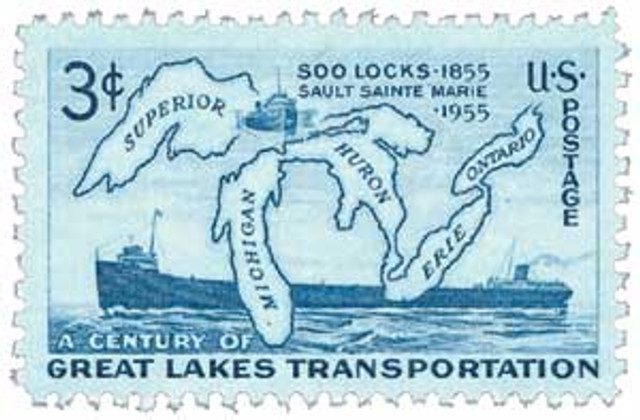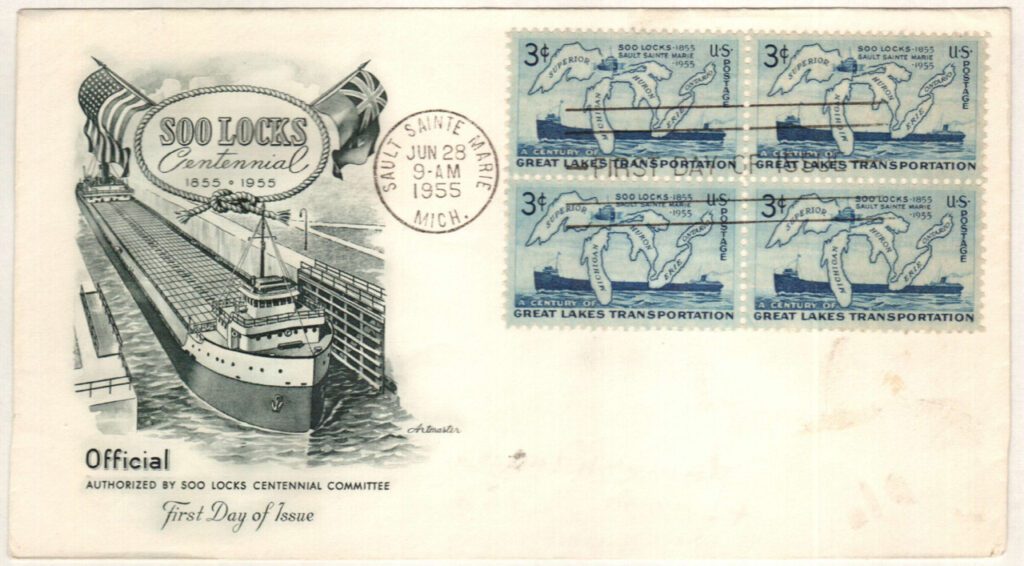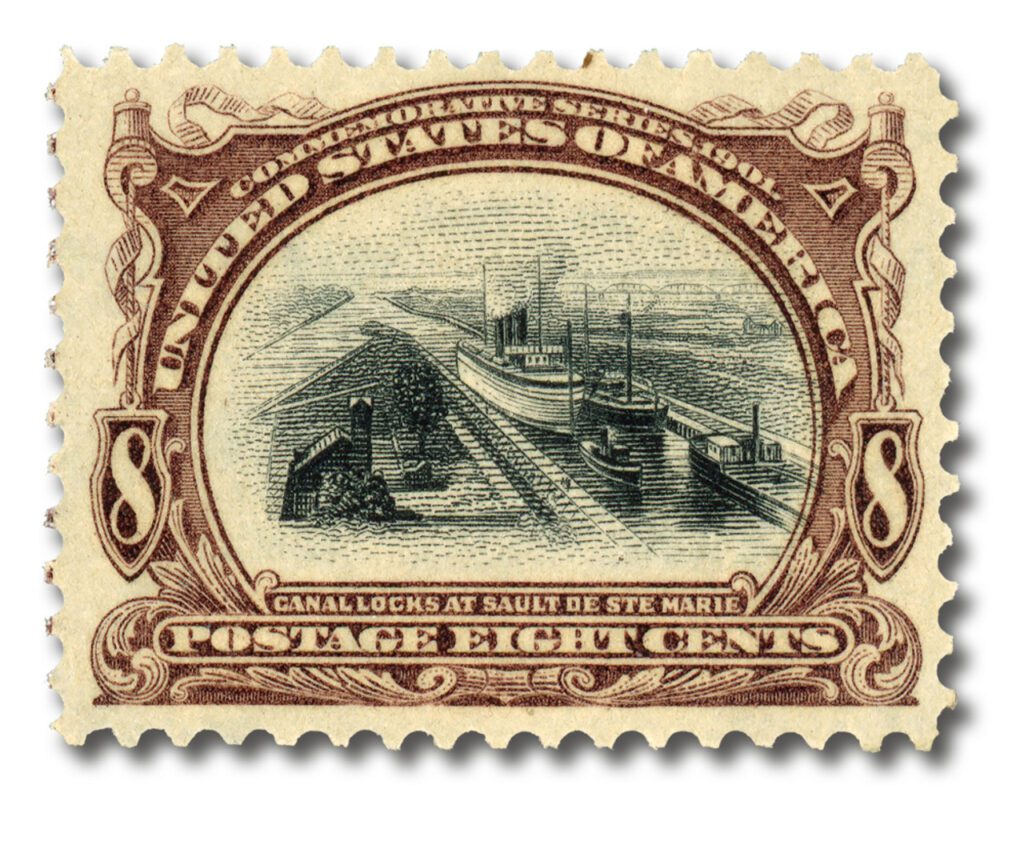On June 18, 1855, the first ship passed through the Soo Locks, located on the St. Mary’s River between Lake Superior and Lake Huron.
For many years, the people of Michigan suggested that the government build a canal and locks at Sault Ste. Marie. The only water connection between Lake Superior and the lower Great Lakes was the St. Mary’s River, but a rapids on the river made passage impossible. Ships were unable to navigate the 21-foot drop at St. Mary’s Rapids.
Some opposed the idea, including one senator from the South who said, the area was “beyond the remotest settlement of the United States,” and that it would be like placing the canal on the moon. In the mid-1840s, however, the tide began to turn. Copper and iron ore were discovered in the western Upper Peninsula. Transporting the minerals to Cleveland and Detroit was time-consuming and costly – they had to be removed from the boats and carried around the rapids.
In August 1852, the government approved the canal and gave Michigan 750,000 acres of land for it. Work on the canal began in 1853. Over the course of two years, it would employ nearly 1,700 men working 12-hour days for $20 a month.
The locks were completed in May 1855 and on June 18, the Illinois became the first boat to pass through them. The process took less than an hour. The new system included two 350-foot locks connected to a one-mile canal. Boats passing through were required to pay a toll of 4¢ per ton. That first summer alone, nearly 1,500 tons of iron ore was transported through the locks. Five years later, that number increased to 120,000 tons.
By 1881, the passage had become so important to American and Canadian trade, it needed to be expanded. The locks were turned over to the US Government and have since been improved and maintained by the Army Corps of Engineers. Today there are four locks, and an average of 10,000 ships pass through them each year – making them one of the world’s busiest locks.
| FREE printable This Day in History album pages Download a PDF of today’s article. Get a binder or other supplies to create your This Day in History album. |
Discover what else happened on This Day in History.




Money well spent, but I’d still like to see it like it was.
Wish I could have seen the construction at the time. And especially the
engineering drawings. Maybe I could have been one of the drafters on the project.
My sister’s first husband was stationed at the Air Force Base at Sault Ste. Marie in the early 1960’s. That’s where they were married. Wonderful article about some American’s don’t know about. No school’s teach that kind of American history.
This is where the Soo Line Railroad got its name.